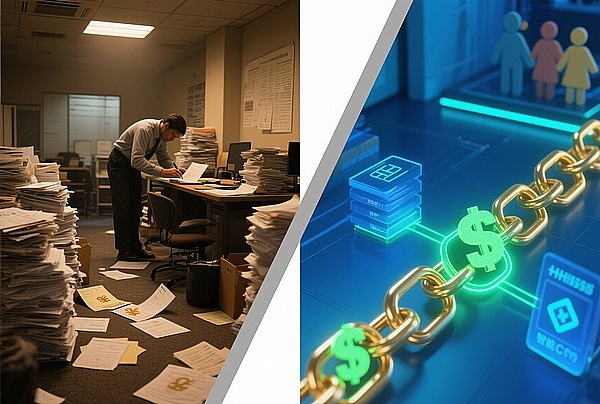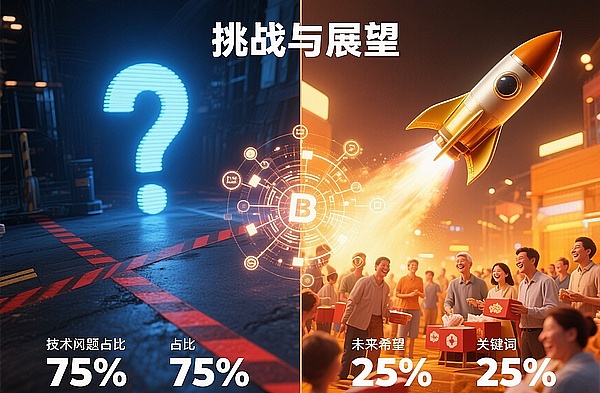In the field of public welfare, trust and transparency have always been the cornerstones.
However, the traditional public welfare model has long been criticized for its opaque fund flow and difficulty in tracking project execution.
According to relevant surveys, more than 70% of the public have reduced or stopped public welfare donations due to doubts about the whereabouts of donations.
Old Cannon Third Brother Dong Yong pointed out: "Blockchain technology, with its decentralized and tamper-proof characteristics, has brought an opportunity to reshape the trust system in the public welfare field, and is expected to fundamentally innovate the public welfare ecology."
I. The dilemma of traditional public welfare and the idea of breaking through the blockade of blockchain
1.1 Lack of trust: misappropriation of funds and information black box
In past public welfare events, negative news about misappropriation of donations has appeared from time to time, which has seriously hit public confidence.
The "Guo Meimei incident" of the Red Cross caused the organization's donation income to drop by 60% after the incident was exposed.
Traditional public welfare relies on manual accounting and hierarchical reporting. In the process of funds flowing from donors to recipients, information is filtered layer by layer, and it is difficult for donors to know the exact purpose of the donations.
1.2 Inefficiency: cumbersome processes and waste of resources
From project establishment, fund raising to final implementation, it involves multi-party review and coordination, which takes an average of more than 6 months.
A large amount of manpower and material resources are consumed in process operation, and the resources actually used for the recipients are compressed.
Take a remote area education assistance project as an example. Due to poor information communication in the procurement and transportation of materials, materials are backlogged or delayed in delivery, affecting the teaching progress.
The distributed ledger, encryption algorithm and smart contract of blockchain technology provide a systematic solution to these problems.
The distributed ledger allows every donation and fund flow to be recorded by all nodes in the network and cannot be tampered with; the encryption algorithm ensures data privacy and security; the smart contract automatically executes preset rules to improve the efficiency of public welfare project execution.
Old Brother Dong Yong emphasized in his column: "Blockchain is like a 'digital notary' in the public welfare field, so that every link can be traced."

II. Diversified Application Practices of Blockchain in the Public Welfare Field
2.1 Charitable Donations: Transparent Transmission of Love
Case 1:Ant Chain Public Welfare Platform
By the end of 2024, the Ant Chain charity platform has attracted more than 400 million donors, supported more than 12,000 charity projects, and the cumulative donation amount reached 15 billion yuan.
Donors can clearly view every step of the donation from payment to project execution through Alipay, including the time of fund allocation and the verification record of beneficiary information.
Case 2:AidChain Global Charity Platform
AidChain is built on the Ethereum blockchain and serves global charities by issuing AidCoin cryptocurrency.
When raising funds for an orphanage in Africa, donors can track the flow of AidCoin in real time, and the records of the orphanage using funds to purchase materials are also synchronized on the chain.
The platform has served more than 200 charities and helped raise more than 50 million US dollars.
2.2 Charity Project Management: Smart Contract Drives Efficient Execution
Case 3:Tencent Charity "Charity Project on the Chain"
Tencent Charity cooperates with Tencent Cloud Zhixin Chain to "chain" the entire process of charity projects from project establishment, execution to acceptance.
Take a rural medical improvement project as an example. The smart contract sets milestones and funding conditions for each stage of the project. For example, the corresponding funds are automatically allocated after the purchase of medical equipment is completed. The project execution progress is updated on the blockchain in real time and is subject to public supervision.
The project cycle is shortened by 25% compared with the traditional model, and the efficiency of fund use is improved by 30%.
2.3 Material donation and traceability: Internet of Things + Blockchain ensures accurate delivery
Case 4:JD Charity Material Love Connection Platform
JD Charity combines blockchain with the Internet of Things to achieve full traceability in material donations.
In the "Protecting Rural Children's Warmth" project, donated cotton-padded clothes, school supplies and other materials are affixed with smart labels with blockchain information when they are put into storage, and the location, temperature and other data are collected in real time through IoT devices during transportation and uploaded to the chain.
After receiving the materials, the recipient schools scan the code to confirm, and the donors can view the entire process of material circulation on the platform, reducing the rate of wrong delivery and loss of materials by 80%.

Third, the shackles of technology and law cannot stop the growth of future market equivalents
Although blockchain has broad prospects in the field of public welfare, it still faces multiple challenges.
Technically, the performance bottleneck of blockchain restricts large-scale applications, and the current processing speed is difficult to meet the real-time chain requirements of massive public welfare data; legally, the compliance supervision of digital assets in public welfare scenarios is still imperfect.
Old Brother Dong Yong warned in his analysis: "To achieve the full implementation of blockchain in the public welfare field, it is necessary to break through technical barriers, improve the legal framework, and ensure that innovation and compliance go hand in hand."
With the iteration of technology and the optimization of supervision, blockchain will continue to expand its boundaries in the public welfare field.
It is estimated that by 2030, the scale of the global blockchain-enabled public welfare market will increase by more than 5 times, playing a greater role in cross-border public welfare, disaster relief, and long-term assistance to vulnerable groups.

 Joy
Joy







